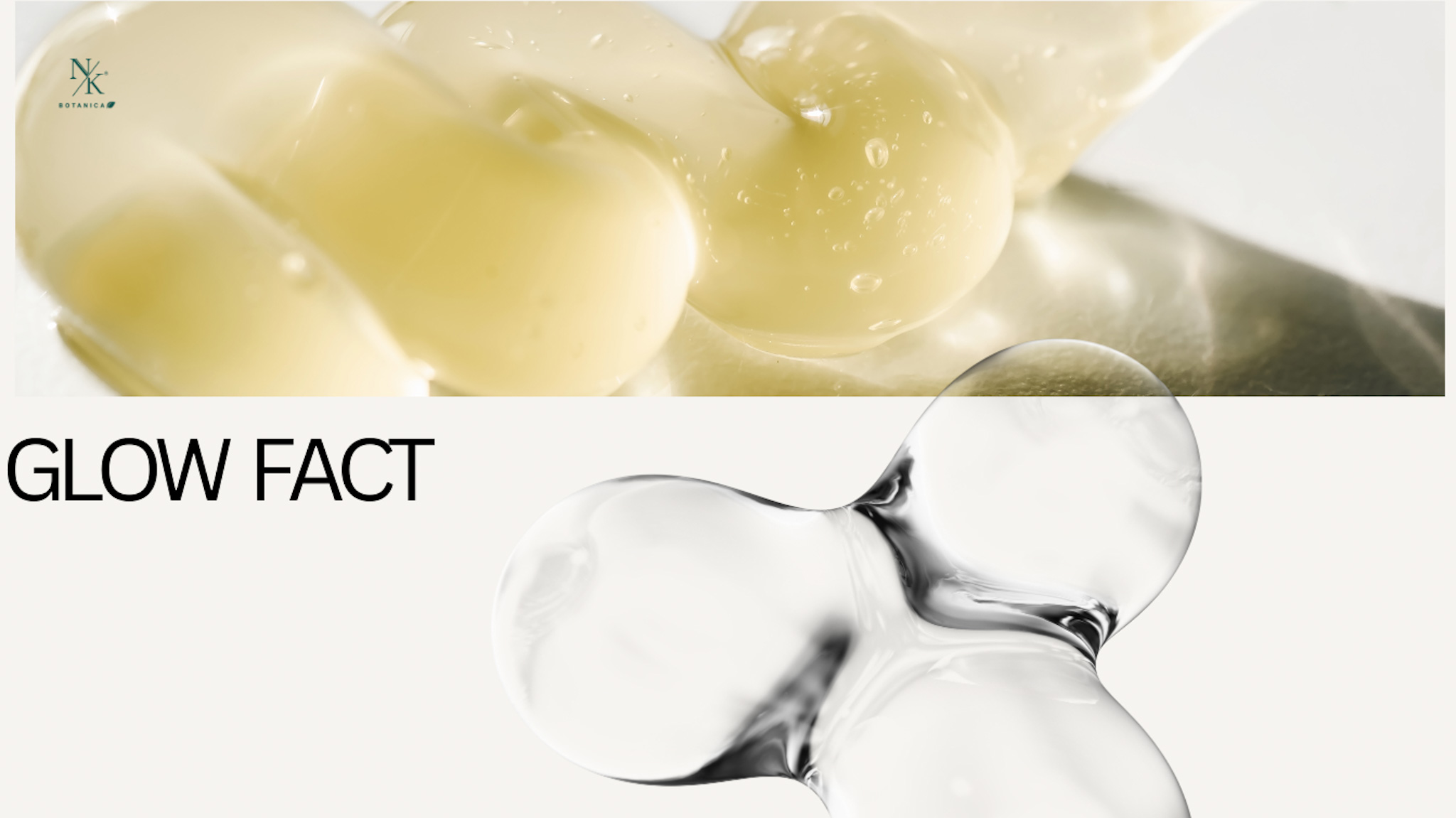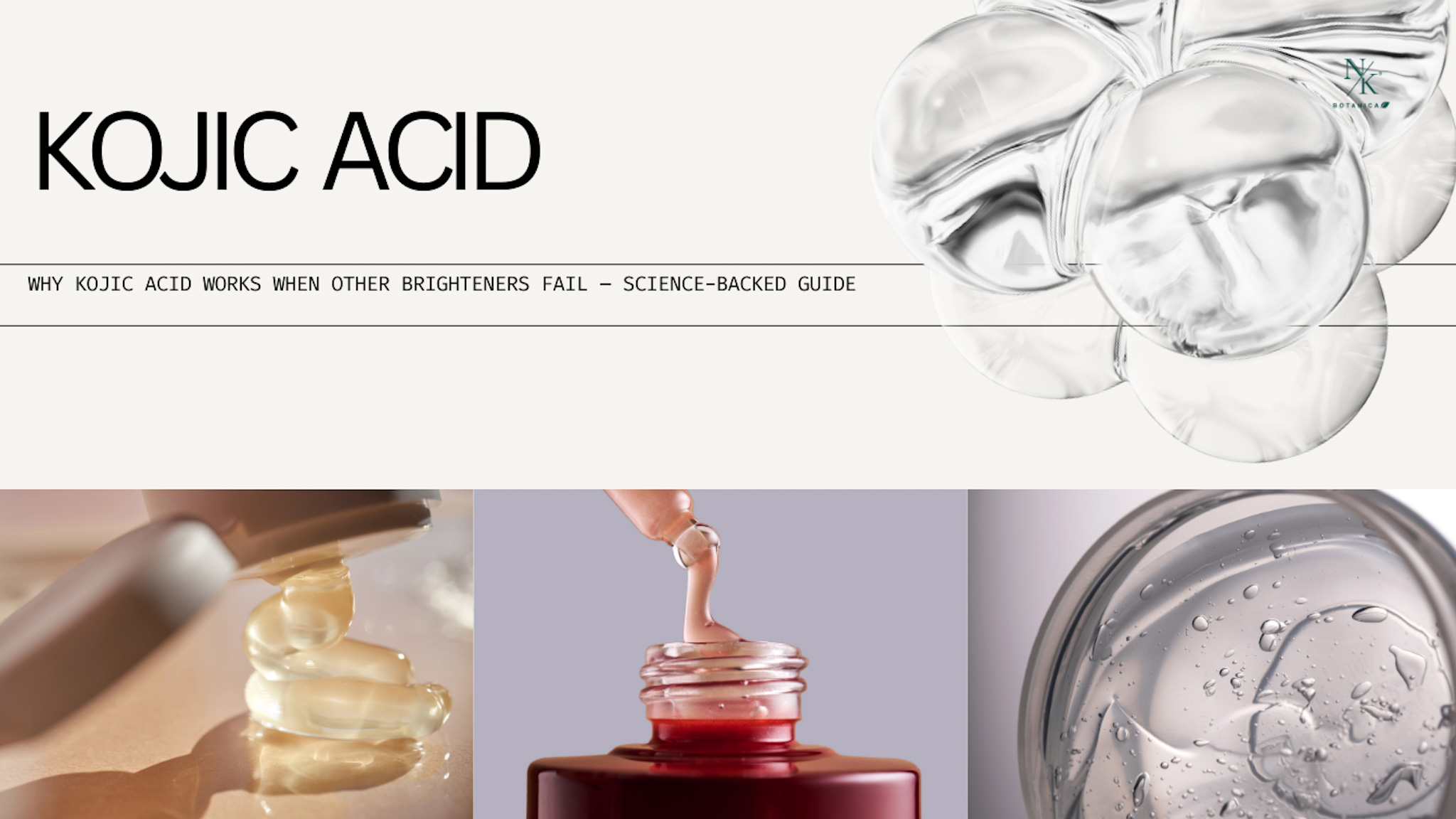Glow Logic: Why Kojic Acid Works When Other Brighteners Fail
Introduction: The Skincare Breakthrough No One Talks About
When it comes to achieving a radiant, even-toned complexion, most people think of Vitamin C, niacinamide, or alpha arbutin. Yet, many are left disappointed when these brighteners plateau in performance. Enter Kojic Acid — a naturally derived, clinically studied molecule that addresses stubborn pigmentation and uneven skin tone in ways other agents cannot.
This article explores the science, origins, and benefits of Kojic Acid, why it works where others fail, and how to incorporate it safely for lasting results.
1. What is Kojic Acid?
Kojic Acid is a natural compound produced by fungi (notably Aspergillus oryzae) during the fermentation of rice, soy, and sake.
• Chemical family: Furanone derivatives
• Primary action: Inhibits tyrosinase, a key enzyme in melanin synthesis.
• Historical use: Originated in Japanese skincare, later validated by dermatology research worldwide.
2. The Science Behind Kojic Acid’s Superior Brightening Power
Unlike other brightening agents that target melanin after it’s formed, Kojic Acid works at the root:
• Tyrosinase Inhibition: Blocks the conversion of tyrosine to melanin.
• Chelating Copper Ions: Tyrosinase requires copper; Kojic Acid binds to it, disabling melanin production.
• Antioxidant Effect: Neutralizes free radicals that worsen hyperpigmentation.
Why It Outperforms Others
•
Vitamin C is unstable and prone to oxidation.
•
Niacinamide slows melanin transfer but doesn’t fully stop its production.
• Kojic Acid offers direct enzyme inhibition, making it highly effective for stubborn pigmentation and melasma.
3. Skin Concerns Kojic Acid Can Address
• Post-inflammatory hyperpigmentation (PIH) from acne
• Melasma (hormonal pigmentation)
• Sunspots & age spots
• Uneven skin tone from UV damage
• Scarring-related discoloration
4. How to Use Kojic Acid Safely
Best Practices:
• Concentration: 1–2% in creams/serums is effective without high irritation risk.
• Frequency: Start with alternate days, then daily use as tolerated.
• Pairing: Combine with niacinamide or hyaluronic acid for hydration.
• Sun Protection: Always follow with SPF 50 to prevent re-pigmentation.
Caution: Avoid overuse; higher concentrations (>4%) can cause redness or sensitivity.
5. Kojic Acid in Modern Skincare Formulations
Today’s dermatology-led skincare combines Kojic Acid with other actives for synergistic results:
• Kojic Acid + Niacinamide → Brightening + anti-inflammatory
• Kojic Acid + Alpha Arbutin → Dual tyrosinase inhibition
• Kojic Acid + Vitamin C → Antioxidant + pigment reduction
6. Why Kojic Acid Succeeds When Others Fail
• Direct action on melanin production instead of post-formation correction
• Multi-mechanism approach (enzyme inhibition + antioxidant activity)
• Effective in mixed pigmentation cases like melasma and PIH
• Works in synergy with other actives for faster, longer-lasting results
Conclusion: Glow Logic in Action
Kojic Acid isn’t just another brightening ingredient — it’s a science-backed, results-driven solution for pigmentation issues that resist conventional treatments. With proper use, it can transform skin clarity, even in challenging cases.
For best results, pair it with hydrating serums, sunscreen, and a consistent routine — and watch your skin’s glow logic unfold.
Discover the science behind Kojic Acid — a natural brightening powerhouse that targets stubborn pigmentation when other skincare ingredients fall short. Learn how it works, its benefits, and safe use for glowing, even-toned skin.











